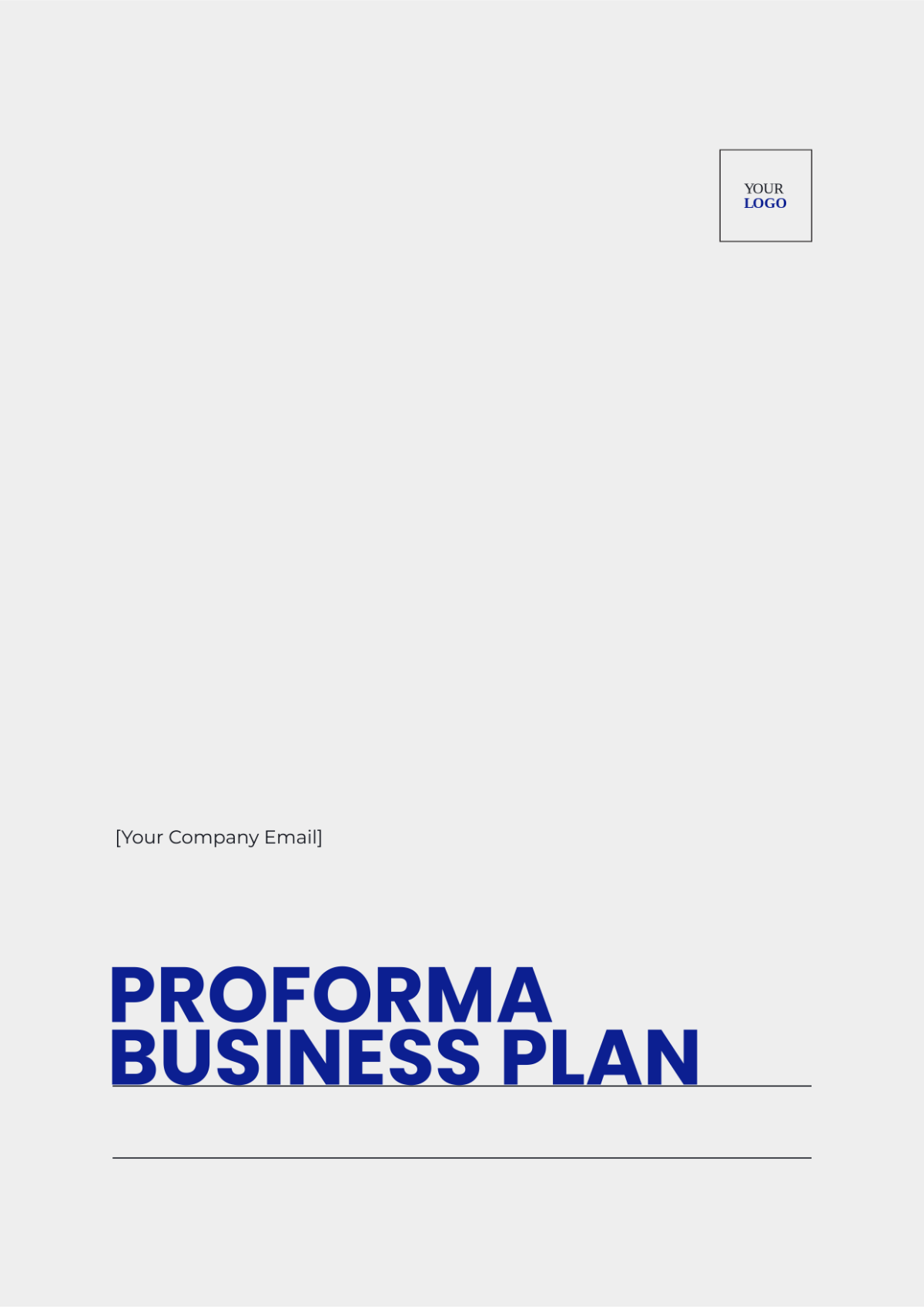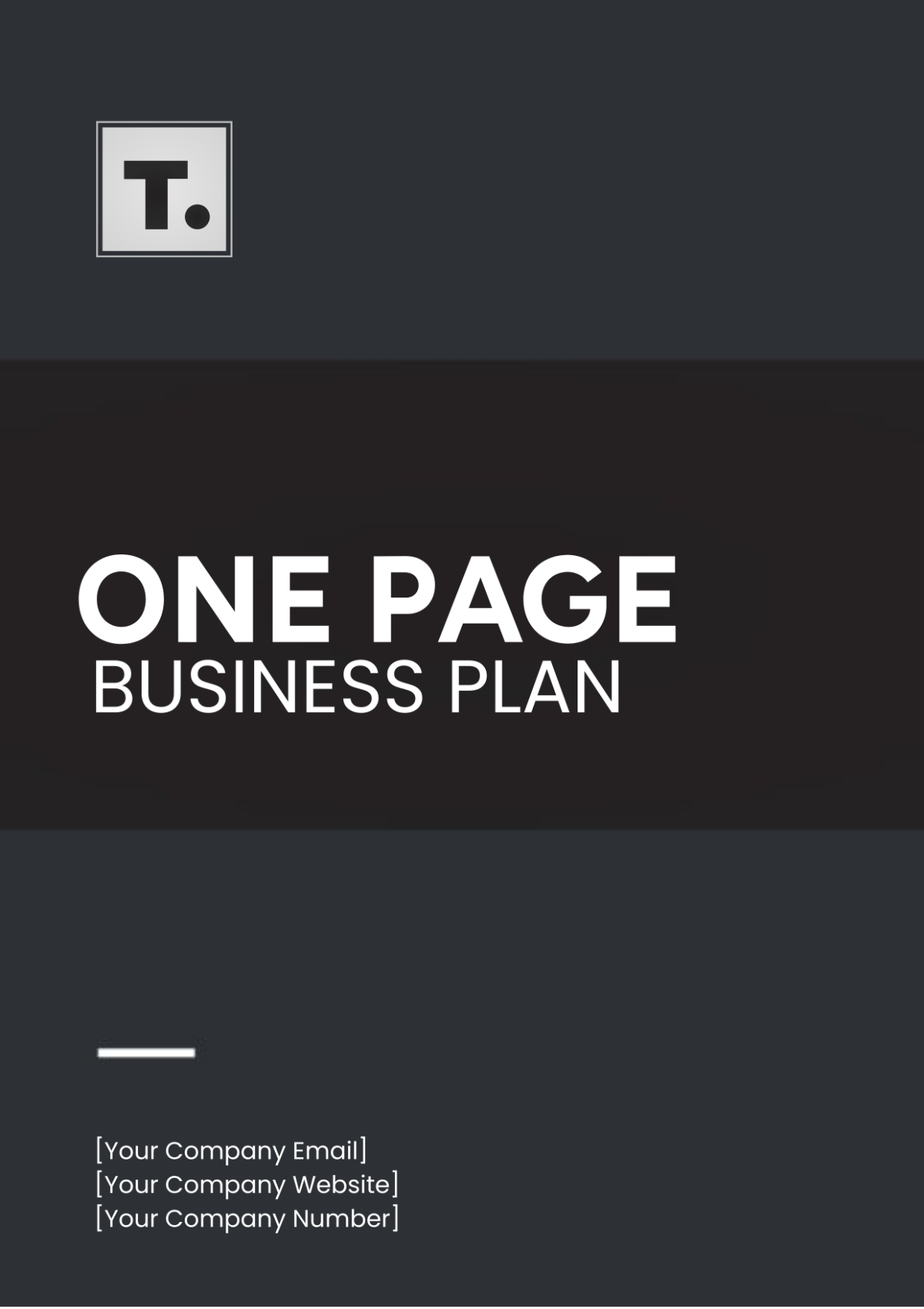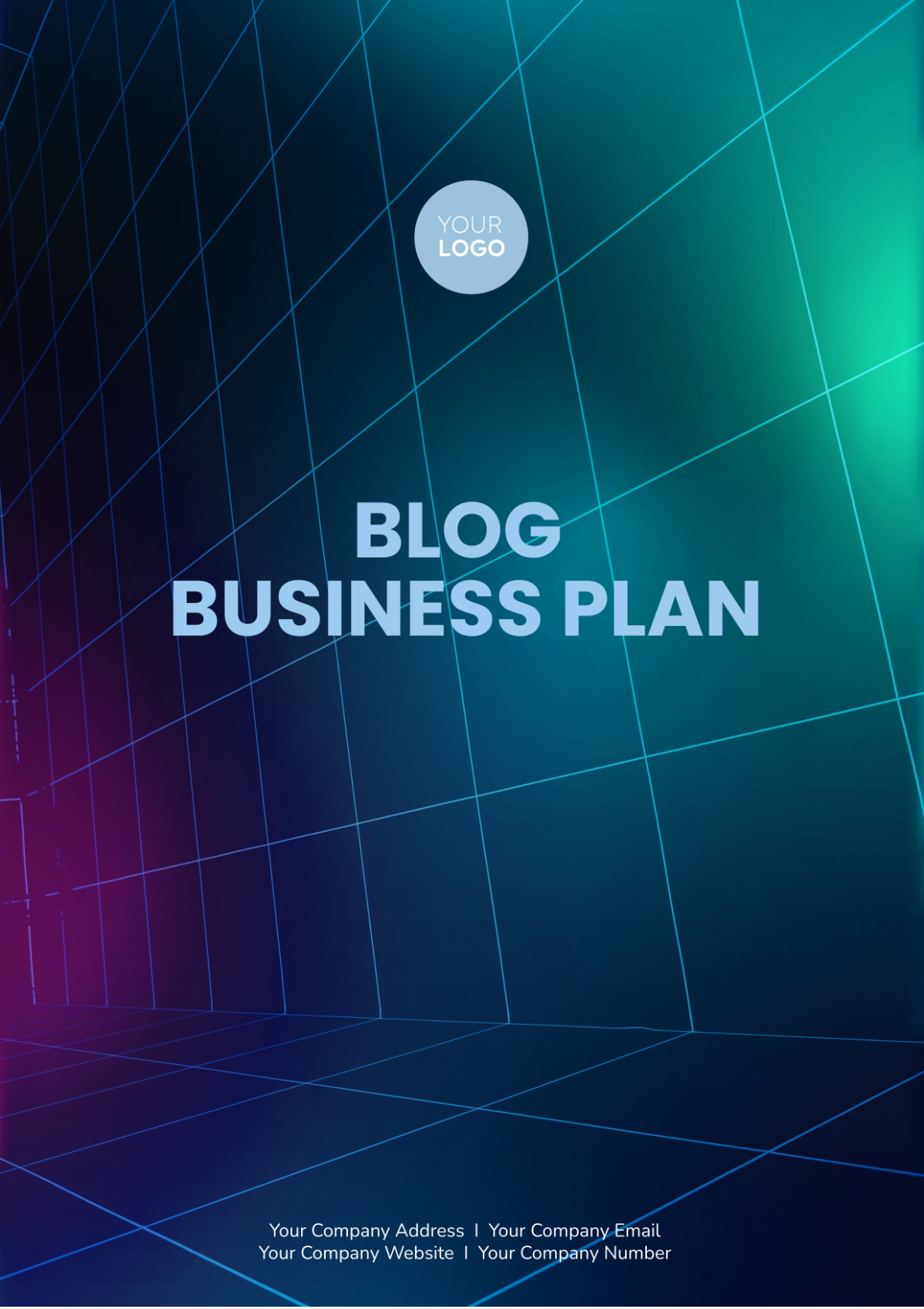Crypto Mining Business Plan
I. Executive Summary
We are embarking on a venture to establish a cryptocurrency mining operation designed to capitalize on the growing demand for blockchain technology and digital currencies. Our primary goal is to become a leading player in the crypto mining industry by leveraging state-of-the-art technology and strategic partnerships. We project initial startup costs of $1 million, with expected annual revenues of $2.5 million within the first three years of operation. Our financial projections indicate that we will achieve profitability by the end of year two, with an anticipated net profit margin of 30%. Funding requirements amount to $1.5 million, which will support equipment purchases, operational costs, and marketing initiatives.
II. Company Description
A. Company Background
We are committed to establishing a robust cryptocurrency mining operation that addresses the increasing global demand for digital currencies. With a team of experienced professionals in the fields of finance, technology, and energy management, we aim to combine our expertise to create a sustainable and profitable business model. Our operation will be located in a region with favorable energy costs and supportive regulations, enabling us to maximize efficiency and profitability.
B. Business Model
Our business model centers around cryptocurrency mining, which involves validating transactions on blockchain networks and earning rewards in the form of cryptocurrency. We will utilize cutting-edge mining hardware and software to optimize our mining operations, and we will participate in various mining pools to enhance our earnings potential. By maintaining a lean operational structure and leveraging economies of scale, we will ensure competitive pricing and profitability.
C. Unique Value Proposition
Our unique value proposition lies in our commitment to sustainable and efficient mining practices. We will prioritize the use of renewable energy sources, such as solar and wind power, to minimize our carbon footprint and reduce energy costs. Additionally, our strategic partnerships with technology providers and local energy companies will enable us to stay ahead of the competition and ensure operational resilience.
D. Legal Structure
We will operate as a Limited Liability Company (LLC), which provides us with the flexibility to manage our business while limiting personal liability. This structure will also facilitate raising capital and attracting investors, as it offers an appealing combination of pass-through taxation and limited liability. We will ensure compliance with all regulatory requirements governing cryptocurrency mining operations, positioning ourselves as a responsible and transparent player in the market.
III. Market Analysis
A. Industry Overview
The cryptocurrency mining industry has witnessed exponential growth in recent years, driven by the increasing adoption of blockchain technology and digital currencies. As of 2024, the global cryptocurrency market capitalization is estimated to exceed $1 trillion, with mining operations accounting for a significant portion of this value. The demand for mining services is projected to grow at a compound annual growth rate (CAGR) of 25% over the next five years, presenting substantial opportunities for new entrants.
B. Target Market
Our target market includes individual miners, small-to-medium enterprises (SMEs), and larger organizations seeking to outsource their mining operations. We will also focus on investors looking to enter the cryptocurrency space through mining as an alternative revenue stream. By understanding the unique needs of these segments, we will tailor our services to deliver maximum value.
C. Competitive Analysis
Competitor | Share | Strengths | Weaknesses |
|---|---|---|---|
A | 20% | Established brand | Higher operational costs |
B | 15% | Advanced technology | Limited geographic reach |
C | 10% | Strong customer support | Smaller scale |
Our strategy to compete effectively in this landscape involves leveraging our sustainable energy model and operational efficiencies to offer competitive pricing. We will also explore potential partnerships with energy providers and technology firms to enhance our service offerings and expand our reach in underserved markets.
D. Regulatory Environment
We will operate within the framework of relevant U.S. regulations to ensure compliance and minimize risks. Key regulations include:
Securities Act of 1933: Governs the offering and sale of securities, which may affect token sales.
Commodity Exchange Act: Regulates trading in commodity futures, relevant for cryptocurrencies classified as commodities.
Bank Secrecy Act (BSA): Requires compliance with anti-money laundering (AML) measures.
State-specific regulations: Each state may have unique licensing requirements for cryptocurrency operations.
IV. Mining Operations
A. Mining Equipment and Technology
Our mining operations will utilize cutting-edge equipment and technology to ensure maximum efficiency and profitability. We will deploy high-performance mining rigs optimized for various cryptocurrencies, along with the necessary software to facilitate mining processes. Key technologies will include:
ASIC Miners: Application-Specific Integrated Circuits designed specifically for mining, offering superior hash rates and energy efficiency compared to traditional hardware.
GPUs: Graphics Processing Units that provide flexibility in mining a variety of cryptocurrencies and are particularly useful for mining coins that are less dependent on ASIC technology.
Mining Software: Programs that connect mining hardware to a blockchain network, enabling efficient transaction validation and reward collection (e.g., CGMiner, EasyMiner).
Cooling Systems: Advanced cooling solutions, such as immersion cooling and HVAC systems, to manage heat generated during mining operations and maintain optimal equipment performance.
Power Management Solutions: Systems that optimize energy consumption, such as smart grid technology and renewable energy integration, to reduce operational costs.
B. Location and Facilities
We will establish our mining facility in an area with a favorable energy landscape and supportive infrastructure. Key infrastructure requirements will include:
Electrical Supply: Sufficient power capacity to support mining operations, estimated at 1 MW to accommodate the equipment. This includes backup generators to ensure continuous operation.
Space Requirements: A facility of approximately 2,500 square feet to house the mining rigs, cooling systems, and ancillary equipment.
Cooling Infrastructure: Installation of efficient cooling systems to manage heat, with an estimated budget of $100,000 for HVAC and cooling solutions.
Internet Connectivity: High-speed internet access with redundancy to maintain uninterrupted mining operations, with estimated costs of $1,000 per month for bandwidth.
Security Measures: Surveillance systems and access control to protect the facility and equipment, with initial setup costs of approximately $20,000.
C. Operational Plan
Our operational plan will focus on maintaining efficient daily mining activities while ensuring the reliability and security of our operations. Daily operations will include:
Monitoring and Maintenance: Continuous monitoring of mining rigs and environmental conditions, with a dedicated team conducting routine maintenance to prevent downtime.
Performance Optimization: Utilizing data analytics to assess the performance of mining equipment and make necessary adjustments to maximize output.
Energy Management: Regular assessments of energy consumption and costs, along with strategies to leverage renewable energy sources whenever possible.
Safety Protocols: Implementing safety measures to protect personnel and equipment, including training programs and emergency response plans.
V. Revenue Model
A. Revenue Streams
Our revenue model is designed to capitalize on various income sources from our mining operations. Key revenue streams include:
Revenue Stream | Estimated Annual Revenue |
|---|---|
Mining Rewards | $1,500,000 |
Transaction Fees | $300,000 |
Cloud Mining Services | $200,000 |
Equipment Leasing | $100,000 |
We anticipate that mining rewards will be our primary source of income, with transaction fees and additional services providing supplementary revenue.
B. Pricing Strategy
Our pricing strategy will focus on competitiveness while ensuring profitability. We will adopt a cost-plus pricing model for our cloud mining services, where prices are based on our operational costs plus a margin. Additionally, for equipment leasing, we will conduct market analysis to determine competitive rates that attract customers while covering our operational expenses. By leveraging our low-cost energy solutions, we can maintain a competitive edge over other mining operations.
C. Profitability Analysis
To evaluate our profitability, we will assess our cost structure and identify our break-even point. Our estimated cost structure is as follows:
Cost Category | Estimated Annual Cost |
|---|---|
Equipment Purchase | $500,000 |
Electricity | $300,000 |
Facility Rent | $120,000 |
Maintenance and Labor | $200,000 |
Marketing and Operations | $50,000 |
The total estimated annual cost is $1,270,000.
Based on our revenue projections of $2,100,000 (from mining rewards, transaction fees, and additional services), our break-even analysis indicates that we will achieve profitability by the end of the second year. The break-even point, calculated as fixed costs divided by the contribution margin per unit, suggests that with our current cost structure and projected revenues, we will cover our costs within 12 months of operation, allowing us to reinvest in equipment and expand our operations.
VI. Marketing and Sales Strategy
A. Branding and Positioning
We will position ourselves as a trusted, user-friendly cryptocurrency platform. Our branding will reflect our commitment to security, simplicity, and education, making us the go-to choice for both novice and experienced investors. Our marketing campaigns will emphasize these core values to build brand recognition and trust in the market.
B. Marketing Channels
Our marketing strategy will encompass a diverse array of channels to reach our target audience effectively. We will leverage social media, content marketing, influencer partnerships, and email campaigns to drive engagement. Our estimated marketing budget for the first year is $500,000, allocated as follows:
Channel | Budget Allocation |
|---|---|
Social Media Advertising | $200,000 |
Content Marketing | $100,000 |
Influencer Partnerships | $100,000 |
Email Marketing | $50,000 |
Community Engagement | $50,000 |
C. Customer Acquisition Strategy
To attract users to our platform, we will implement targeted advertising campaigns, offer referral bonuses, and provide initial fee waivers for new users. Educational webinars and free resources will also drive traffic and establish credibility, encouraging users to sign up.
D. Customer Retention Strategy
We believe that retaining customers is just as important as acquiring them. Our retention strategy includes regular updates and enhancements to our platform, responsive customer support, and loyalty programs that reward users for their continued engagement. We will also provide ongoing educational resources to help users maximize their investments, fostering a community of informed traders who are more likely to remain loyal to our platform.
VII. Operations and Management
A. Operational Plan
Our operational plan outlines the key processes and systems that will enable us to deliver our services efficiently and effectively. We will implement a robust framework for managing transactions, customer service, and compliance. Our operations will focus on user support, security, and ongoing product development to ensure a seamless experience for our users. We will also establish partnerships with liquidity providers and payment processors to enhance our service offerings.
B. Technology and Infrastructure
Our technology infrastructure will be built on a scalable cloud platform, utilizing industry-standard security measures and blockchain technology. This will ensure high availability, fast transaction processing, and protection against cyber threats. We will implement a microservices architecture to facilitate quick updates and enhancements to our platform without disrupting services. Additionally, we will leverage data analytics tools to monitor user behavior and optimize our offerings.
C. Team Structure
Our team is comprised of professionals with diverse backgrounds in finance, technology, marketing, and compliance. This multidisciplinary approach will ensure that we can address the complex challenges of the cryptocurrency market effectively. Below is a summary of our team structure:
Role | Responsibilities |
|---|---|
CEO | Strategic direction, investor relations |
CTO | Technology strategy, platform development |
CMO | Marketing strategy, brand development |
COO | Operations management, customer support |
Compliance Officer | Regulatory compliance, risk management |
Product Manager | Product development, user experience enhancement |
Customer Support Manager | Overseeing customer service operations |
D. Recruitment Plan
Our recruitment plan focuses on attracting top talent to fill key roles within our organization. We will leverage industry networks, job boards, and recruitment agencies to identify candidates with experience in cryptocurrency, blockchain technology, and financial services. Initial hiring will prioritize roles in technology, compliance, and customer support, ensuring that we have a strong foundation as we launch our platform.
VIII. Financial Plan
A. Startup Costs
Our startup costs are crucial for ensuring a smooth launch and operation of our cryptocurrency platform. These costs will cover technology development, marketing, regulatory compliance, and initial operational expenses. The following table outlines our estimated startup costs:
Expense Category | Estimated Cost |
|---|---|
Technology Development | $800,000 |
Marketing | $500,000 |
Regulatory Compliance | $200,000 |
Initial Operational Expenses | $300,000 |
Legal and Consulting Fees | $150,000 |
Total Startup Costs | $1,900,000 |
The analysis indicates that our largest expenditure will be in technology development, reflecting the critical importance of building a secure and scalable platform. Our marketing expenses are also significant, as we aim to establish a strong market presence upon launch.
B. Revenue Projections
Our revenue projections reflect our growth strategy and anticipated market demand. The following table summarizes our expected revenues over the next three years:
Year | Year 1 | Year 2 | Year 3 |
|---|---|---|---|
Transaction Fees | $1,500,000 | $5,000,000 | $10,000,000 |
Staking Services | $800,000 | $2,000,000 | $4,000,000 |
Premium Memberships | $200,000 | $600,000 | $1,200,000 |
Consulting Services | $100,000 | $300,000 | $600,000 |
Educational Resources | $100,000 | $300,000 | $600,000 |
Total Revenue | $2,800,000 | $8,500,000 | $16,000,000 |
Our revenue projections indicate strong growth, with a total revenue increase of approximately 400% from Year 1 to Year 3. This growth will primarily be driven by increasing transaction volume and user engagement.
C. Expense Projections
Our expense projections account for ongoing operational costs, including technology maintenance, marketing, and personnel expenses. The table below summarizes our expected expenses over the next three years:
Year | Year 1 | Year 2 | Year 3 |
|---|---|---|---|
Operational Expenses | $1,500,000 | $2,500,000 | $4,000,000 |
Marketing | $500,000 | $600,000 | $700,000 |
Personnel | $600,000 | $800,000 | $1,000,000 |
Technology Maintenance | $300,000 | $400,000 | $500,000 |
Compliance | $100,000 | $200,000 | $300,000 |
Total Expenses | $3,000,000 | $4,600,000 | $6,500,000 |
This analysis shows that our operational expenses will increase as we scale our business, but we expect revenue growth to significantly outpace these costs, leading to improved profitability.
D. Funding Requirements
To support our launch and initial operations, we require $2 million in funding. This capital will be allocated as follows:
Funding Requirement | Amount Needed |
|---|---|
Technology Development | $800,000 |
Marketing | $500,000 |
Regulatory Compliance | $200,000 |
Initial Operational Expenses | $300,000 |
Legal and Consulting Fees | $150,000 |
Working Capital | $50,000 |
Total Funding Required | $2,000,000 |
E. Financial Statements
Our financial statements will provide insight into our financial health and performance. The table below summarizes our projected balance sheet at the end of Year 1.
Item | Amount |
|---|---|
Assets | |
Cash | $1,000,000 |
Accounts Receivable | $200,000 |
Technology Assets | $600,000 |
Total Assets | $1,800,000 |
Liabilities | |
Accounts Payable | $300,000 |
Long-term Liabilities | $500,000 |
Total Liabilities | $800,000 |
Equity | |
Owner's Equity | $1,000,000 |
Total Liabilities and Equity | $1,800,000 |
IX. Risk Analysis
We recognize that entering the cryptocurrency market involves various risks. Our risk analysis includes identifying potential risks, their likelihood, and their potential impact on our operations. The following table outlines these risks:
Risk | Likelihood | Impact |
|---|---|---|
Regulatory Changes | High | High |
Cybersecurity Threats | Medium | High |
Market Volatility | High | Medium |
Operational Failures | Medium | High |
Competition | High | Medium |
To mitigate these risks, we have developed comprehensive strategies. We will actively monitor regulatory developments to ensure compliance, implement robust cybersecurity measures to protect user data, and maintain a diversified product offering to adapt to market fluctuations. Additionally, we will continuously analyze the competitive landscape to adjust our strategies accordingly, ensuring we remain a strong contender in the marketplace.
X. Legal and Compliance
Our commitment to legal and regulatory compliance is fundamental to our operations, ensuring that we adhere to all applicable laws and regulations governing the cryptocurrency industry. We will establish a dedicated compliance team to monitor changes in the legal landscape and implement necessary adjustments to our business practices. This proactive approach will not only safeguard our organization but also build trust with our users and investors. Below are some of the relevant U.S. laws and regulations that will impact our operations:
Securities Act of 1933: Governs the offering and sale of securities, requiring registration of securities unless exempt.
Securities Exchange Act of 1934: Regulates trading in securities and the operations of securities exchanges.
Investment Company Act of 1940: Regulates investment companies, potentially impacting funds that invest in cryptocurrencies.
Commodity Exchange Act: Governs trading in commodity futures, which may include certain cryptocurrencies classified as commodities.
Bank Secrecy Act (BSA): Requires financial institutions to report suspicious activity and implement anti-money laundering (AML) measures.
Financial Crimes Enforcement Network (FinCEN) Regulations: Establishes guidelines for cryptocurrency exchanges as money services businesses (MSBs).
State Money Transmitter Laws: Vary by state, requiring licensing and compliance with local regulations for money transmission services.
XI. Exit Strategy
A. Acquisition
An acquisition presents a viable exit strategy for us, allowing a larger company to absorb our operations and technologies. We will position ourselves as an attractive acquisition target by demonstrating robust user growth, innovative technology, and a strong market position. Engaging with potential acquirers will involve strategic partnerships and networking within the cryptocurrency ecosystem, ensuring that we remain on the radar of companies seeking to enhance their offerings or market share.
B. IPO or Direct Listing
Another potential exit strategy is pursuing an Initial Public Offering (IPO) or direct listing on a stock exchange. This route would enable us to raise significant capital while providing liquidity to our investors. To prepare for this, we will focus on building a strong financial foundation, increasing our user base, and establishing brand recognition. Engaging with financial advisors and underwriters will be essential in navigating the regulatory requirements and ensuring a successful public offering.
C. Token Buyback or Liquidation
In the event that our market position does not allow for an acquisition or IPO, we may consider a token buyback or liquidation strategy. A buyback would involve repurchasing our tokens from the market to reduce supply and potentially increase value for remaining token holders. This strategy can signal confidence in our project's future to investors. Alternatively, if liquidation becomes necessary, we will ensure that all assets are accounted for and distributed fairly among stakeholders, adhering to legal obligations and minimizing losses for investors.
Crypto Templates @ Template.net

















































